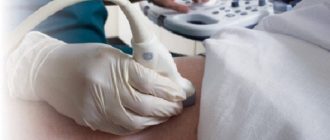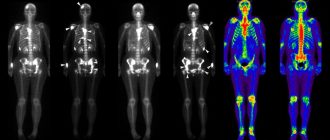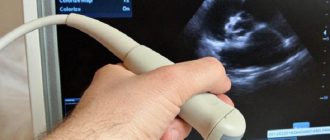Ultrasound of the prostate, bladder and kidneys is one of the methods for a comprehensive examination of the genitourinary system. To obtain a reliable result, it is necessary to prepare for the procedure. It doesn't take much time and doesn't require much effort.
The price of the procedure depends on the region in which the scan is performed, the choice of clinic and the type of procedure. Average prices are 2-3.5 thousand rubles; ultrasound examination of the prostate using the rectal method is a separate procedure, its cost ranges from 800 to 1,500 rubles.
What is determined during the procedure
Ultrasound of the prostate gland, bladder and kidneys is prescribed for suspected:
- prostatitis;
- BPH (adenoma);
- oncology;
- pyelonephritis;
- infertility;
- the presence of stones and cystic cavities.
A diagnostic procedure is prescribed when the following symptoms appear:
- weakening of erection;
- pain in the perineum;
- urination problems;
- abnormalities in urine tests.
A comprehensive examination helps to exclude diseases with similar symptoms and determine the extent of damage to neighboring organs.
A comprehensive ultrasound is necessary if prostatitis or adenoma is suspected, since these diseases are accompanied by poor urination. This causes the accumulation of residual urine and the development of pathogenic bacteria, which leads to inflammation of the entire genitourinary system.
Ultrasound examinations of the pelvic organs should be performed a couple of times a year in order to identify pathologies at an early stage and begin therapy in a timely manner.
Preparation
To conduct an examination that will have the necessary accuracy, you need to prepare for an ultrasound of the prostate gland, kidneys and bladder. Without taking certain measures, it will be difficult to determine the condition of the organs, this will affect the result of the examination.
Preparation for an ultrasound examination of the kidneys of the bladder and prostate is carried out 2 to 3 days in advance. Despite the fact that the examination of each organ has its own differences, there are general rules:
- You can eat before an ultrasound scan of the prostate and bladder 12 hours before the examination. Food in the gastrointestinal tract absorbs ultrasonic waves and worsens the picture.
- Patients prone to increased gas formation need to go on a special diet. Avoid: carbonated water, caffeine, legumes, bread, dairy products, raw fruits and vegetables.
- During an ultrasound of the bladder and prostate with determination of residual urine, you need to refrain from emptying your bladder 6 hours before the procedure or drink 1–1.5 liters of water in the morning.
- Carrying out an ultrasound of the prostate and testicles in men using the abdominal method requires compliance with the rules of hygiene: take a shower before visiting the doctor and thoroughly wash the perineum and the area under the abdomen.
- When performing an ultrasound of the prostate and scrotum using the transrectal method, the intestines should be cleansed with a microenema.
- It is necessary to inform your doctor about the medications you are taking; some of them may affect the results of the examination.
Bladder filling plays an important role in diagnosing diseases:
- If the bladder is not filled enough, folds remain, which can be mistaken for a tumor.
- The prostate gland is better visible against the background of the full organ.
- If it is overcrowded, its dimensions are distorted. It is necessary to partially empty it and drink some water to refill it later.
Carrying out
Ultrasound scanning is not performed:
- for wounds or cuts in the inspection area;
- when conducting an X-ray examination of the digestive tract;
- immediately after gastroscopy.
How an ultrasound of the bladder and prostate will be performed depends on the type of scan that was chosen for the examination. The method of administration is chosen by the attending physician. It depends on the manifestation of the disease, the intended diagnosis and the presence of contraindications.
Ultrasound of the prostate and bladder is done in several ways:
- Abdominal.
- Rectal.
- Urethral.
Urethral examination requires local anesthesia.
During the examination, pressure is applied to the lower abdomen, so at the time of the examination there should be no strong urge to urinate.
Interpretation of results and norms
The transcript is given to the patient immediately after the examination. It contains the following data:
- organ structure;
- its contours;
- dimensions;
- weight;
- presence of stones;
- condition of the ducts.
Ultrasound standards for the bladder and prostate gland depend on the patient’s age, as well as individual characteristics of the size of the genital organs.
The urinary tract of an adult male has the following indicators:
- volume from 350 to 750 ml;
- clear, even contours;
- walls without seals, of the same thickness;
- echostructure – isoechoic;
- residual urine indicators are not more than 50 ml.
The prostate gland must have:
- dimensions: length - no more than 40 mm, width - 27-41 mm, thickness - 16-24 mm;
- weight: up to 20 g.
Depending on age, the volume of the prostate gland may vary (in cubic cm):
- up to 20 years – 20;
- 20 – 30 years – up to 25;
- 30 – 55 years – up to 30;
- after 55 years – up to 35.
Changes in the size, echogenicity and weight of organs signal inflammation, the formation of cysts, stones and other diseases.



